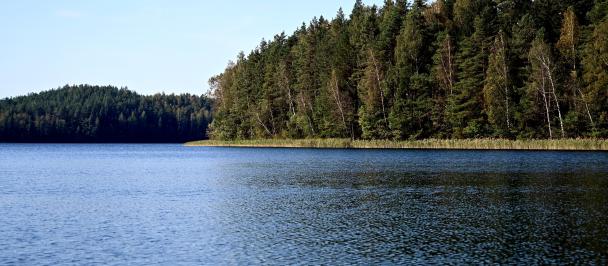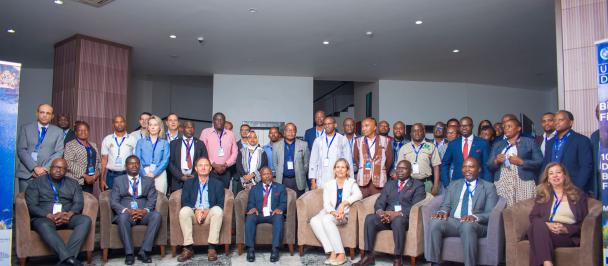WWD 2024 international youth art contest winners announced
March 4, 2024

Images of the winning artists: On the left is four-year-old Isaac Alvin Lam from Hong Kong with an art piece depicting a den of snakes, winner in the traditional art category. On the right is 18-year-old Noh Sangeunf from Singapore with an art piece depicting cranes, winner in the digital art category.
Washington, D.C. – Today, young people across the world, including a four-year-old, have been recognized for their artistic talents in the World Wildlife Day 2024 International Youth Art Contest. This year marks the sixth annual contest hosted by the International Fund for Animal Welfare (IFAW), in partnership with the Secretariat of the Convention on International Trade in Endangered Species of Wild Fauna and Flora (CITES), and the United Nations Development Programme (UNDP).
With a piece depicting a den of snakes, four-year old, Isaac Alvin Lam’s (Hong Kong SAR People’s Republic of China) artwork was voted as the winner for the traditional art category and 18-year old, Noh Sangeun’s (Republic of Singapore) entry featuring cranes, was voted as the winner of the digital art category. Both winners were recognized as part of today’s official United Nations’ World Wildlife Day celebrations.
The winners were selected from a record 3,000 plus entries, representing 141 different countries and sovereign areas around the world.
Under this year’s theme “Connecting People and Planet: Exploring Digital Innovation in Wildlife Conservation”, entries featured species that benefit from technology, such as camera traps, and tracking devices. The theme aimed to showcase the importance of digital technology to safeguard biodiversity.
Artworks from 15 semi-finalists were selected by a panel which included representatives from IFAW, CITES, UNDP, Jackson Wild, and WildLabs. Guest judges including celebrated syndicated cartoonist Jim Toomey, Trevor Tillman, manager of photo and video production at beloved baby lifestyle brand Munchkin Inc., and last year’s art contest winner, Poonyisa Sodsai were also on the panel.
“This was a record-breaking year for global submissions and the talent displayed in the art pieces is extraordinary,” said Danielle Kessler, U.S. Director with the International Fund for Animal Welfare.
“The world’s biodiversity is sadly disappearing at alarming rates, and the passionate submissions gathered from around the world reinforce a dedication to wildlife conservation from future generations, which is exactly what the world needs. It is an honor to continue hosting this global contest that provides them with a platform for such expression. Congratulations to all the participants, finalists, and this year’s winners, Isaac and Noh, for contributing such amazing pieces.”
“I’m very pleased to congratulate our winners, Isaac and Noh,” said CITES Secretary-General, Ivonne Higuero. I would also like to recognize the talent and commitment of all our entrants. It is uplifting to see so many young people, from so many countries, recognize the value in partnerships and technology to conserve and protect imperiled species.”
"UNDP would like to warmly congratulate Isaac and Noh,” said Midori Paxton, Head of Ecosystems and Biodiversity at the United Nations Development Programme. “Their paintings captures how a young person can be inspired despite the enormity, in a variety of ways, to help protect and conserve species.”
The winning artwork along with the finalist entries, can be viewed on the IFAW website.
For more information and to arrange interviews, please contact:
IFAW: Katie Arberg, karberg@ifaw.org
CITES: CITES Secretariat Media Team (cites-media@un.org)
UNDP: Sangita Khadka, sangita.khadka@undp.org
About IFAW
The International Fund for Animal Welfare is a global non-profit helping animals and people thrive together. We are experts and everyday people, working across seas, oceans, and in more than 40 countries around the world. We rescue, rehabilitate, and release animals, and we restore and protect their natural habitats. The problems we’re up against are urgent and complicated. To solve them, we match fresh thinking with bold action. We partner with local communities, governments, non-governmental organizations, and businesses. Together, we pioneer new and innovative ways to help all species flourish. See how at ifaw.org.
About CITES
The Convention on International Trade in Endangered Species of Wild Fauna and Flora (CITES) was signed in on 3 March 1973 and entered into force on 1 July 1975. With 183 Parties (182 countries + the European Union) it remains one of the world's most powerful tools for wildlife conservation through the regulation of international trade in over 36,000 species of wild animals and plants. CITES-listed species are used by people around the world in their daily lives for food health care, furniture, housing, tourist souvenirs, cosmetics or fashion. CITES seeks to ensure that international trade in such species is sustainable, legal and traceable and contributes to both the livelihoods of the communities that live closest to them and to national economies for a healthy planet and the prosperity of the people, in support to UN Sustainable Development Goals.
About UNDP
UNDP partners with people at all levels of society to help build nations that can withstand crisis, and drive and sustain the kind of growth that improves the quality of life for everyone. On the ground in nearly 170 countries and territories, we offer global perspective and local insight to help empower lives and build resilient nations.
About the United Nations’ World Wildlife Day
On 20 December 2013, the 68th session of the United Nations General Assembly proclaimed 3 March as World Wildlife Day to celebrate and raise awareness of the world’s wild fauna and flora. The date is the day of the signature of the Convention on International Trade in Endangered Species of Wild Fauna and Flora (CITES) in 1973. World Wildlife Day has quickly become the most prominent global annual event dedicated to wildlife. It is an opportunity to celebrate the many beautiful and varied forms of wild fauna and flora and to raise awareness of the various challenges faced by these species. The day also reminds us of the urgent need to step up the fight against wildlife crime, which has wide-ranging economic, environmental and social impacts.

 Locations
Locations
